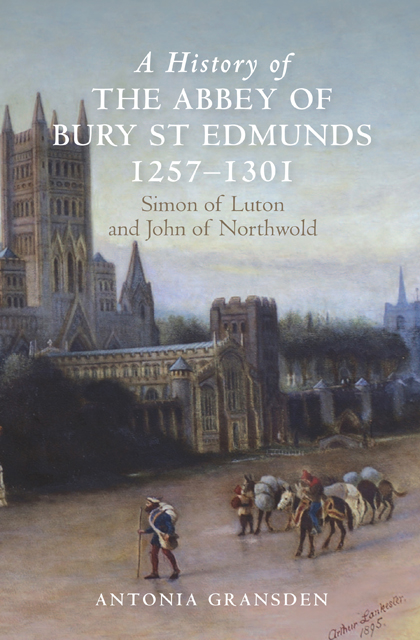Book contents
- Frontmatter
- Dedication
- Contents
- List of plates
- List of figures
- Preface
- Editorial note
- Dedication
- Acknowledgements
- Abbreviations
- Maps and plans (figures 1–11)
- Part I Introduction
- Part II Abbatial Governance
- Part III The Abbey’s Economy
- Part IV Religious Life and Reform
- Part V Intellectual and Cultural Life
- Appendix I The identity of the abbot’s justices, Henry of Guildford and Henry of Shenholt (in 1287)
- Appendix II The monks’ dietary regime: their food and drink
- Select List of the Registers and Customaries Cited
- Select List of Further Manuscripts Cited
- Select Bibliography
- Index
- Backmatter
20 - Religious Life under Abbot Simon
Published online by Cambridge University Press: 22 February 2023
- Frontmatter
- Dedication
- Contents
- List of plates
- List of figures
- Preface
- Editorial note
- Dedication
- Acknowledgements
- Abbreviations
- Maps and plans (figures 1–11)
- Part I Introduction
- Part II Abbatial Governance
- Part III The Abbey’s Economy
- Part IV Religious Life and Reform
- Part V Intellectual and Cultural Life
- Appendix I The identity of the abbot’s justices, Henry of Guildford and Henry of Shenholt (in 1287)
- Appendix II The monks’ dietary regime: their food and drink
- Select List of the Registers and Customaries Cited
- Select List of Further Manuscripts Cited
- Select Bibliography
- Index
- Backmatter
Summary
Pilgrimage, the new Lady Chapel and the cult of the Virgin Mary
The worldly problems faced by Abbot Simon and the convent did not prevent them from attending to their spiritual needs and charitable obligations. They fostered the cult of saints, notably, of course, that of St Edmund, king and martyr. Also, as we shall see, there was a shrine and altar to Thomas, the apostle, together with Jurmin and Botulph.
Thomas, Jurmin and Botulph had been venerated at St Edmunds since before the Conquest. The cults of Jurmin and Botulph are particularly interesting. According to legend the ‘invention’ – discovery – of Botulph was truly miraculous, an event which happened during the abbacy of Leofstan (1046–65):
The body of the blessed Botulph formerly a bishop, was dug up at a vill called Grundisburg (in east Suffolk). His translation took place in the darkness of night; a ray of divine light was seen to dispel the darkness and shine down on his tomb.
According to the same legendary account the invention of Jurmin likewise had particular features:
The body, indeed, of the blessed Jurmin was similarly found in a vill called Blythburg. His body was in a lead coffin on which was inscribed this epitaph: ‘I Jurmin, in the name of the Holy Trinity, warn anyone who dares plunder this place of burial until the day of resurrection, he should know that he thus casts himself from the company of saints’, in other words is damned.
The question arises why the legends of Jurmin and Botulph attracted such hagiographic details. Seen in the context of the times, it is not surprising. With regard to Jurmin’s legend, it must be remembered that in the Middle Ages the theft of relics (furta sacra) could be seen as a pious, not a criminous activity, that is, if it were done on behalf of a church – to increase the reputation of that church for sanctity. The collections of alleged relics of saints were assembled by middlemen and sold on to churches much like any other merchandise – or they might be exchanged for benefits or favours, bartered so to speak.
- Type
- Chapter
- Information
- A History of the Abbey of Bury St Edmunds, 1257-1301Simon of Luton and John of Northwold, pp. 205 - 219Publisher: Boydell & BrewerPrint publication year: 2015

